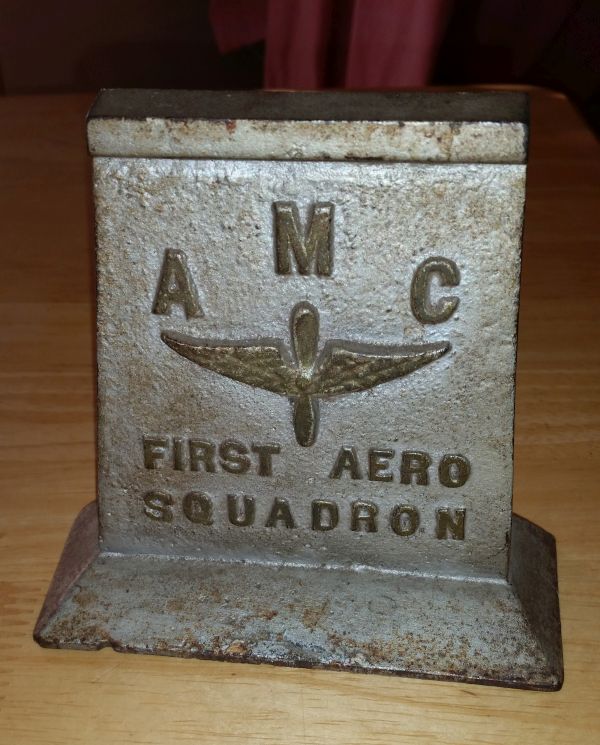Can you help identify this artifact of the First Aero Squadron?
Alert reader Mark Davis sent me photos of this piece after reading my article on the First Aero Squadron in Mexico and wanted to know if I had any idea what this artifact is. It’s cast iron, about 6 inches tall, 5 inches wide, weighs about 3 pounds, and is hollow in back.

Here is what I do know.
– This particular prop and wing emblem was used by Army aviation from 1920 to 1947, so it was probably made after the Mexican Punitive Expedition and World War I.
– AMC most likely stands for Aviation Maintenance Company, although it could stand for Air Materials Command (which only existed in 1946-47).

Was this used to support something heavy, or was it purely decorative.
If you have any ideas what this might be, please leave a comment and I will pass your thoughts on to the owner of the piece.

The First Aero Squadron was the US Army’s first aviation unit. It was initially composed of eight Curtiss JN-4 Jennies, and first saw action during the Mexican Punitive Expedition when 10,000 troops under Gen. Pershing hunted for Pancho Villa’s bandits after the Raid on Columbus in March 1916.





